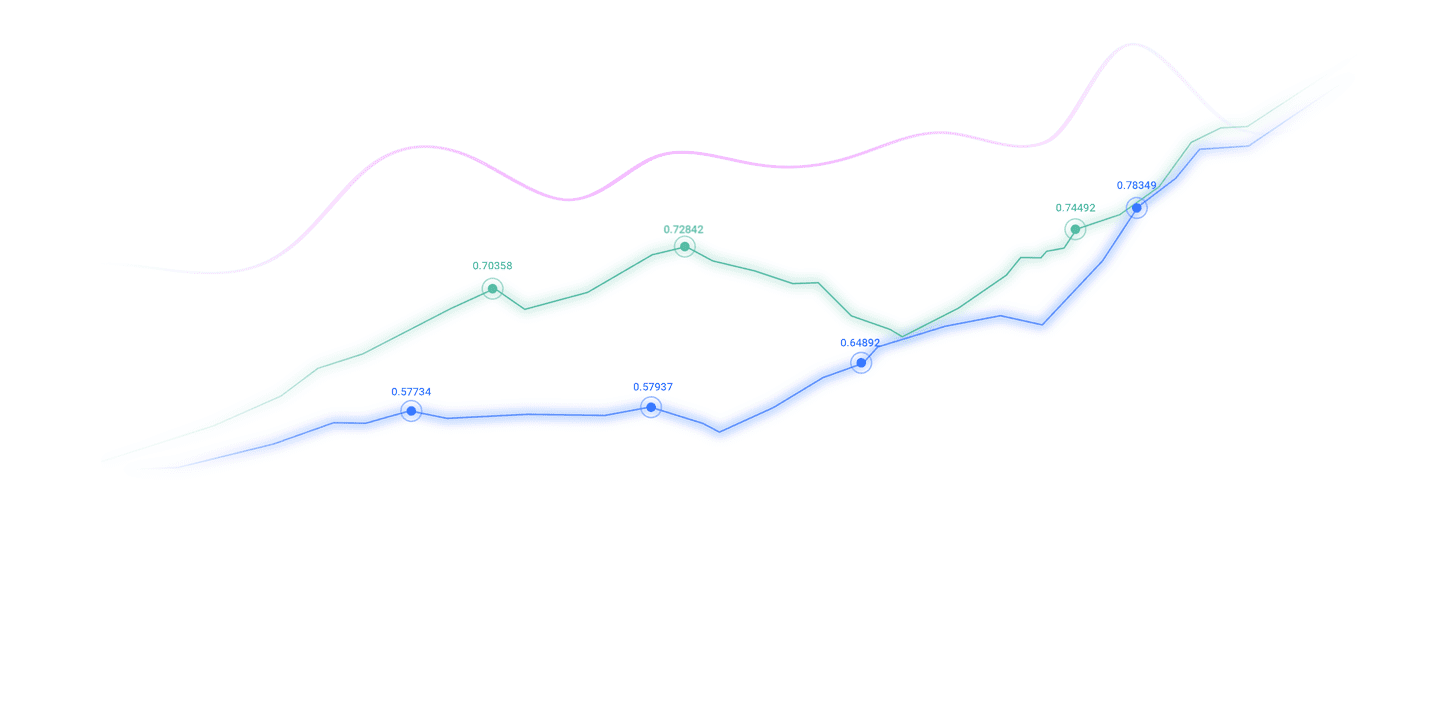Trusted by over 15 Million Traders
The Most Awarded Broker
for a Reason
CATEGORIES
News
- 8.5 Gold continues to rise and closes to the middle-yang, and today it will corr
- The possibility of the ECB's last rate cut later this year remains
- Tariffs from the United States and Europe have been reached, and gold has bottom
- France's political turmoil and Bank of England's position supports the pound, EU
- Credit bonds are being shorted wildly. What kind of storm is hidden under the ne
market news
In the days without data, how would the market rely on trading? Is the US dollar retreating, or is the Swiss franc breaking its defense?
Wonderful introduction:
Without the depth of the blue sky, you can have the elegance of white clouds; without the magnificence of the sea, you can have the elegance of the creek; without the fragrance of the wilderness, you can have the greenness of the grass. There is no bystander seat in life. We can always find our own position, our own light source, and our own voice.
Hello everyone, today XM Forex will bring you "[XM official website]: On days without data, how does the market rely on trading? Is the US dollar retreating, or is the Swiss franc breaking through?". Hope this helps you! The original content is as follows:
November 10, Monday. The current main line of the foreign exchange market still revolves around interest rate expectations and macro data gaps, with risk appetite being moderate and volatility suppressed. The U.S. dollar index consolidated around 99.60, and the U.S. dollar against the Swiss franc maintained a narrow range around the 0.8050 line during the European session. Liquidity and news resonated, making spread trading and hedging dominate the short-term rhythm.
At the U.S. Congressional level, the Senate is advancing a plan to extend temporary federal funding until January next year, which still needs to be voted by the House of Representatives and signed by the president. This arrangement is not the final word, but more of a time window for fiscal negotiations, but its direct effect is to reduce the near-term policy uncertainty premium. In the short term, the easing of the "shutdown" risk will help restore the rhythm of statistical releases, including key data such as non-farm employment and consumer price index, thereby providing an anchor for the market to recalibrate the Fed's path. However, the time lag in the administrative and legislative processes means that even if the funding is implemented, data collection and release may be delayed in stages, and the market may still be in an environment of "incomplete information" in the next few weeks.
In terms of interest rate expectations, derivatives pricing shows that the market has a probability of about 62.6% for the Federal Reserve to cut interest rates at its December meeting. This pricing reflects two meanings: first, the marginal slowdown in early growth momentum and the downward trend in inflation are still regarded as the main line; second, the policy interest rate will be in the restrictive range for an extended period of time, but the threshold for marginal adjustment has been lowered. If the release of data resumes and it is verified that inflation is slowing down and employment margins are cooling, mid- and long-term U.S. bond yields may remain weak, suppressing the U.S. dollar's interest rate advantage. For USD/CHF, interest rate xmxyly.compression and defensive capital reallocation have tended toIt tends to correspond to situations where the exchange rate repeatedly falls or fluctuates at low levels.
The divergence between inflation and demand expectations is also growing. The latest consumer survey showed confidence indicators falling back to their lowest levels since mid-2022, while one-year inflation expectations rose to 4.7%. Under the assumption that the statistical caliber and sample structure remain unchanged, this xmxyly.combination of "weak confidence and resilient inflation expectations" has strengthened concerns about pressure on real income and rebalancing of service consumption. At the same time, although the policy idea of transferring tariff revenue to residents in the form of cash or tax credits has not been implemented, the issue itself will disturb medium-term inflation expectations. If such discussions heat up in the xmxyly.coming weeks, the inflation risk premium may rise again, causing short-term reversals in the relative strength of nominal and real interest rates, which will affect the direction of the U.S. dollar.
The policy signals from Switzerland are relatively clear. As for the Swiss National Bank, major officials have previously stated that inflation may pick up moderately in the next few quarters, but interest rates tend to remain on hold for a longer period of time. xmxyly.compared with other major central banks, the Swiss National Bank's xmxyly.communication emphasizes price stability and the sound balance of the financial system, and keeps a distance from market speculation about "restarting negative interest rates" in this cycle. The statement tempered bets for quick easing, sustaining the Swiss franc's appeal as a low-volatility safe-haven asset.
Look at the potential impact paths. First, if the temporary appropriation plan is successfully transformed into law and statistical releases are quickly resumed, and if the non-farm payrolls and CPI verify that inflation is moderate on a month-on-month basis and wage growth is blunted, the Fed's forward guidance may emphasize "data-based patience", event-driven buying of the U.S. dollar will be limited, and the probability of the U.S. dollar remaining low against the Swiss franc will increase. Second, if subsequent political negotiations recur and data are delayed again, the market may continue to rely on surveys and high-frequency indicators instead. Third, if discussions about potential fiscal stimulus or tax burden adjustments heat up and the inflation expectation curve is revised upwards, rising nominal interest rates may support the dollar in the short term, but whether real interest rates can rise simultaneously will determine the sustainability of this support.
Technical aspects
The four-hour chart of USD/CHF shows that the rebound started from 0.7924 was blocked at 0.8123, stopped at 0.8031 after retracement, and is now consolidating sideways around 0.8050. 0.8000 and the previous platform of 0.7986 form intensive support; the upper part of 0.8065-0.8080 is a short-term pressure, and the further trend is still at 0.8123.
After MACD fell back from the high, the green column shortened, the negative kinetic energy converged, and the price and kinetic energy showed signs of divergence; RSI (14) was about 47, which was in a weak range and fluctuated upward. The short-term volatility has declined and the K-line entity has narrowed, indicating that transactions are mainly hedging and position adjustments. Pay attention to the breakthrough direction and volume-energy coordination of 0.8031/0.8000 and 0.8065/0.8080.
Looking ahead
The core variables of USD/CHF are: the pace and direction of data recovery, the change in the slope of the interest rate spread curve, and the marginal tone of policy xmxyly.communication. Considering that the current market hasWith a certain probability of the Fed easing policy in December, any inflation and employment readings that deviate from expectations are likely to amplify price reactions. If inflation in services items further cools down and goods items remain weak due to the fall in freight and air ticket prices, the market will reassess the urgency of policy and the possibility of periodic pressure on the US dollar will increase. Conversely, if inflation expectations rebound due to fiscal discussions or supply disturbances, the direction of real interest rates will become a key watershed, determining the height and duration of the dollar's rebound.
In summary, the current price and fluctuation structure of the US dollar against the Swiss franc reflects a game at two levels: externally, it is the re-anchoring of US data and policy paths, and internally, it is the continuation of the Swiss National Bank’s stable expectations and the Swiss franc’s safe-haven attribute. As long as there are no directional changes in data recovery and policy xmxyly.communication, the characteristics of low volatility and defensive bias are likely to continue. In the next few weeks, attention will be paid to the legislative implementation of the temporary appropriation plan, the release time and direction of non-farm payrolls and CPI, and the statements of officials from the two central banks on rebalancing inflation.
The above content is all about "[XM Official Website]: On days without data, how does the market rely on trading? Is it the US dollar retreating, or the Swiss franc breaking its defense?" It is carefully xmxyly.compiled and edited by the XM foreign exchange editor. I hope it will be helpful to your trading! Thanks for the support!
Due to the author's limited ability and time constraints, some contents in the article still need to be discussed and studied in depth. Therefore, in the future, the author will conduct extended research and discussion on the following issues:
Disclaimers: XM Group only provides execution services and access permissions for online trading platforms, and allows individuals to view and/or use the website or the content provided on the website, but has no intention of making any changes or extensions, nor will it change or extend its services and access permissions. All access and usage permissions will be subject to the following terms and conditions: (i) Terms and conditions; (ii) Risk warning; And (iii) a complete disclaimer. Please note that all information provided on the website is for general informational purposes only. In addition, the content of all XM online trading platforms does not constitute, and cannot be used for any unauthorized financial market trading invitations and/or invitations. Financial market transactions pose significant risks to your investment capital.
All materials published on online trading platforms are only intended for educational/informational purposes and do not include or should be considered for financial, investment tax, or trading related consulting and advice, or transaction price records, or any financial product or non invitation related trading offers or invitations.
All content provided by XM and third-party suppliers on this website, including opinions, news, research, analysis, prices, other information, and third-party website links, remains unchanged and is provided as general market commentary rather than investment advice. All materials published on online trading platforms are only for educational/informational purposes and do not include or should be considered as applicable to financial, investment tax, or trading related advice and recommendations, or transaction price records, or any financial product or non invitation related financial offers or invitations. Please ensure that you have read and fully understood the information on XM's non independent investment research tips and risk warnings. For more details, please click here


































































































